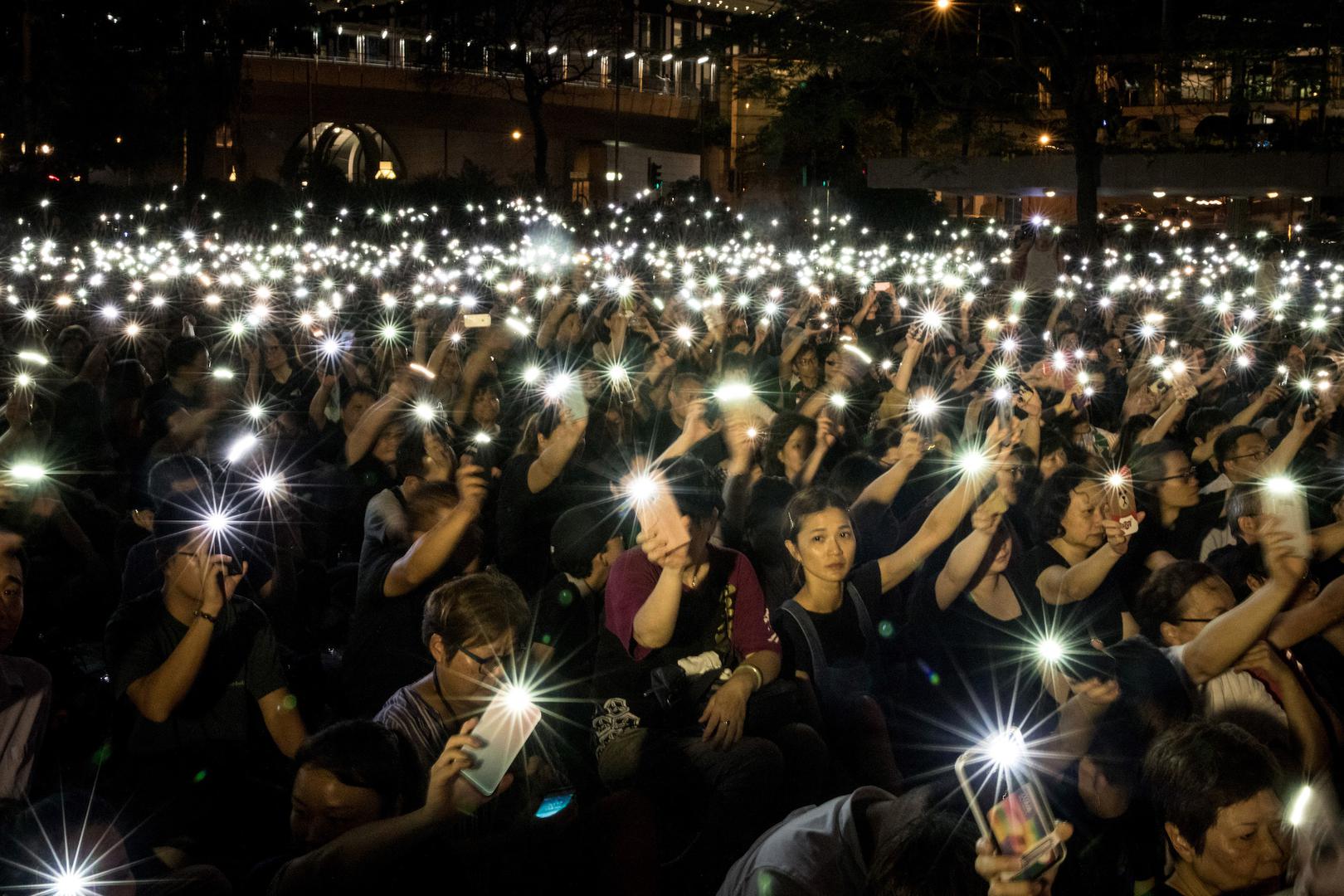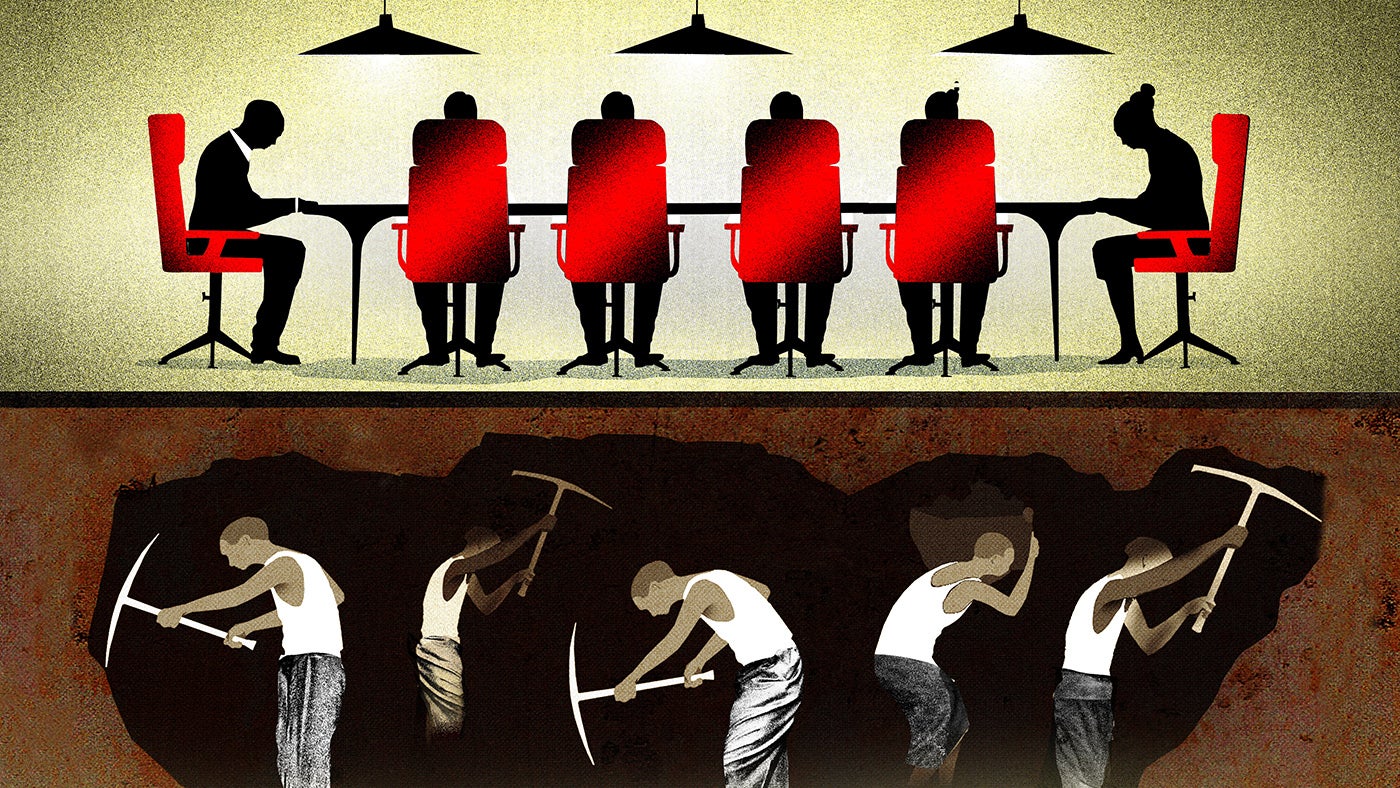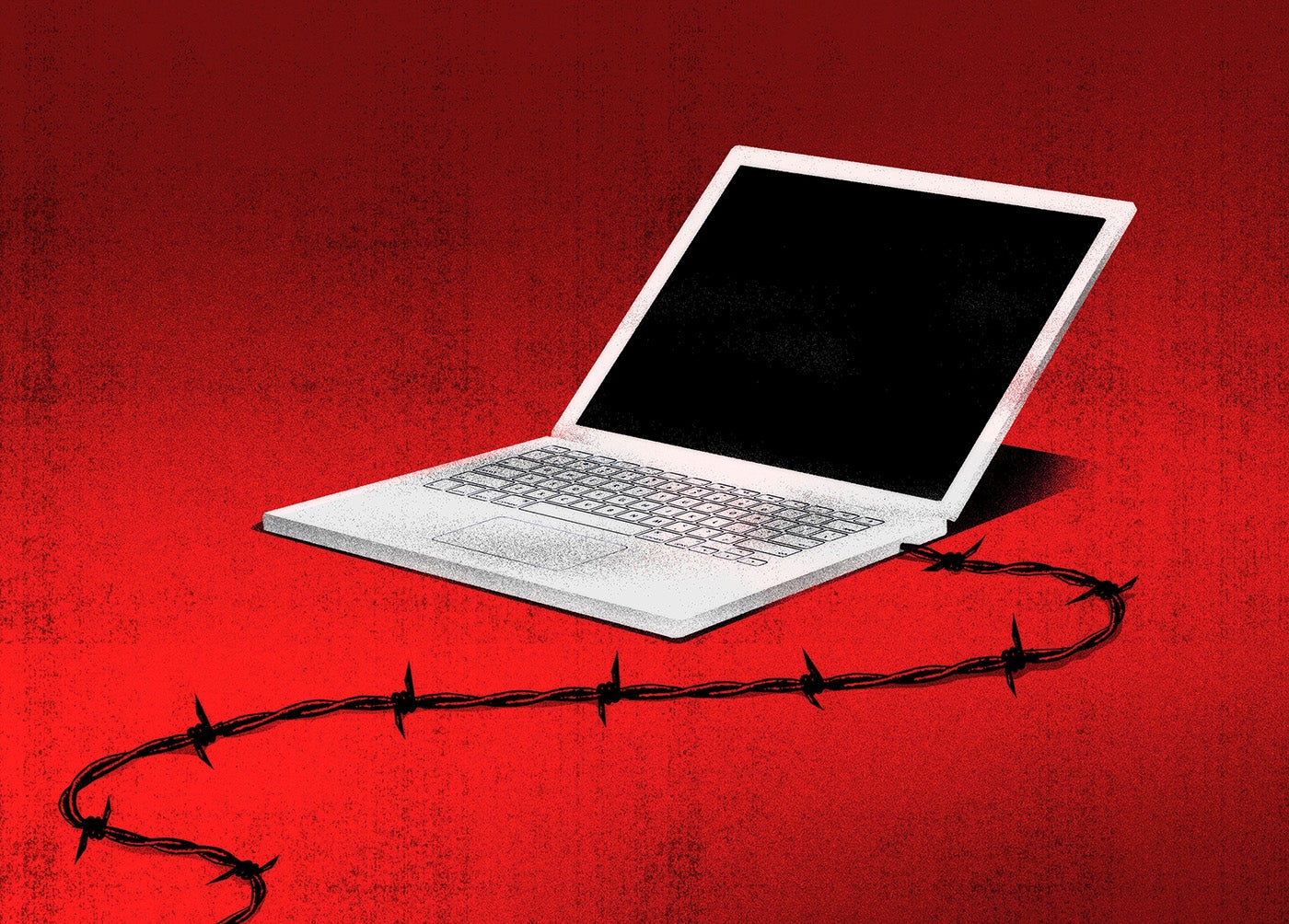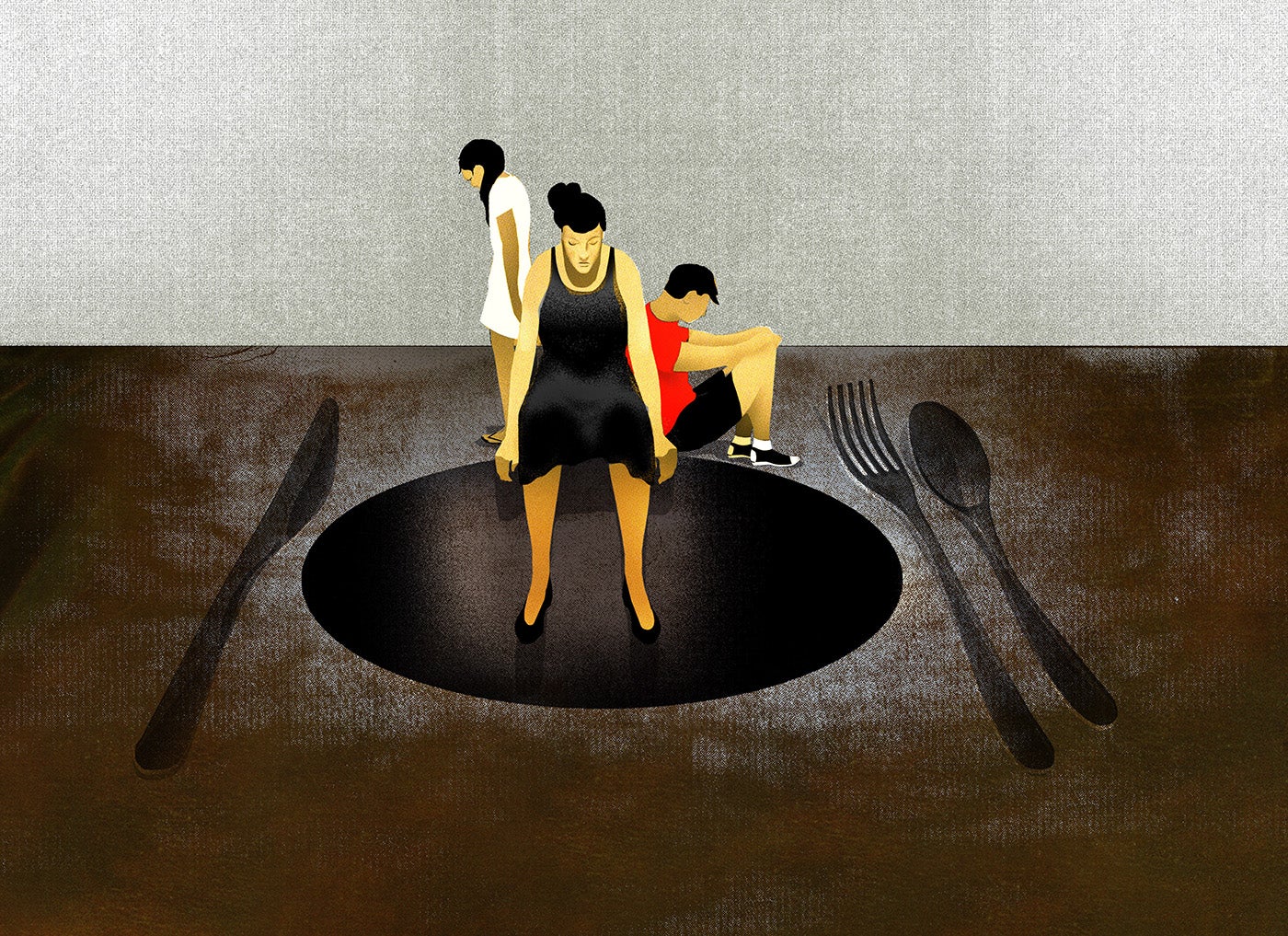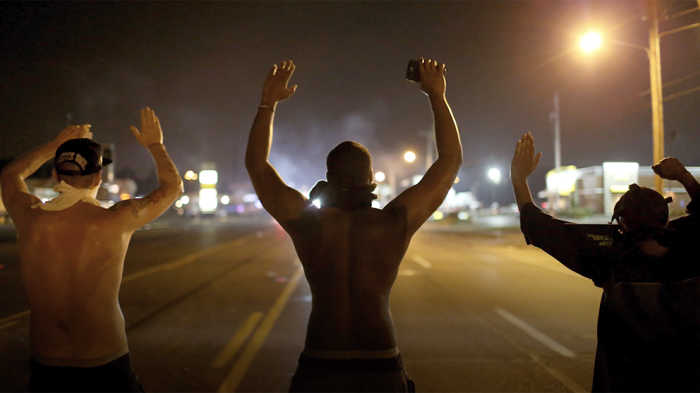In 2019, the United States continued to move backwards on rights. The Trump administration rolled out inhumane immigration policies and promoted false narratives that perpetuate racism and discrimination; did not do nearly enough to address mass incarceration; undermined the rights of women and lesbian, gay, bisexual, and transgender (LGBT) people; further weakened the ability of Americans to obtain adequate health care; and deregulated industries that put people’s health and safety at risk.
In its foreign policy, the Trump administration made little use of its diminishing leverage to promote human rights abroad; continued to undermine multilateral institutions; and flouted international human rights and humanitarian law as it partnered with abusive governments—though it did sanction some individuals and governments for committing human rights abuses.
Criminal Legal System
The US continues to have the highest reported criminal incarceration rate in the world, with 2.2 million people in jails and prisons and another 4.5 million on probation and parole as of 2017, the latest year for which Bureau of Justice Statistics figures were available at time of writing. The figures show a slight decrease in the number of people incarcerated from 2016 to 2017 and a 10 percent decrease from a decade earlier.
This decrease can be partly attributed to greater recognition among policy makers and the public of unfairness in the US criminal legal system and the harm caused, which has spurned many state-level reforms. Still, in several states incarceration rose, as did the incarceration rate for women, which grew by 750 percent from 1980 to 2017.
On the federal level, following enactment of the First Step Act at the end of 2018, more than 3,000 people were released from prison in July, earlier than they would have been without the legislation. Though hailed as a major bipartisan criminal reform initiative, the law left many concerns unaddressed and affected only a small number of those held in the federal criminal system, which itself accounts for only about 10 percent of the total number of people incarcerated in the United States.
Stark racial disparities still exist in the prison population. While the overall imprisonment rate was down, among black women it was nearly twice as high as among white women and the imprisonment rate for black men was almost six times the rate for white men. For younger black men, the disparity was even larger.
The death penalty is allowed in 29 states. According to the Death Penalty Information Center, 20 people in seven states had been executed in 2019 by the middle of November— all in the south and mid-west of the country. There were eight executions in Texas; three in Alabama and Georgia; two in Florida and Tennessee; and one each in Missouri and South Dakota. The Trump administration announced a resumption of federal executions in July after 16 years without them, but a federal court blocked the resumption in November. In California, which has over 730 prisoners on death row, the governor imposed a moratorium on executions, and in New Hampshire, the legislature repealed its death penalty statute.
Poor people accused of crimes continue to be jailed because courts require money bail as a condition of release, forcing people not convicted of any crime to stay behind bars for long periods of time awaiting trial and resulting in coerced guilty pleas. A movement to eliminate money bail is growing but many states are replacing it with risk assessment tools that could entrench discrimination while failing to lower pretrial rates of incarceration. New York enacted pretrial reform measures in April that are expected to dramatically reduce the number of people who can be detained pretrial using money bail and improve due process for the remainder. The measures, which take effect in January 2020, do not mandate the use of risk assessment tools.
Laws banning individuals with criminal convictions from voting continue to exist throughout the US. In 2018 voters in Florida approved a measure restoring the right to vote to 1.4 million residents with felony convictions, but in July the state enacted a law requiring those affected to pay all financial obligations, including excessive fines and fees, before this right is restored.
Children in the Criminal and Juvenile Justice Systems
On any given day, approximately 50,000 children are held in confinement. In the juvenile justice system, 2,200 youth are imprisoned for “status” offenses—noncriminal acts that are considered violations of the law only because the individuals in question are under 18 years old.
Additionally, all 50 states continue to prosecute children in adult criminal courts. According to the Citizens Committee for Children, roughly 32,000 children under 18 are admitted annually to adult jails. The Sentencing Project reports there are approximately 1,300 people serving life without parole sentences (LWOP) for crimes committed below age 18. Oregon passed a law eliminating the use of juvenile LWOP. In all, 22 states and the District of Columbia now prohibit juvenile life without parole.
Racial disparities persist at every stage of a person’s contact with the law, leaving children of color disproportionately represented in juvenile justice systems across the country; in 37 states, rates of incarceration were higher for black children than for white, according to The Sentencing Project.
Racial Justice and Policing
Stark inequalities in wealth exist throughout the United States, and poverty intersects with crime, which is used to justify more aggressive policing in poor, often minority, communities. Rather than address problems of poverty—including homelessness, mental health, and gang involvement—with services, support, and economic development, many US jurisdictions simply add more police and effectively “criminalize” poor communities, a vicious circle that fuels high rates of incarceration.
Government tracking of police violence continues to be incomplete. According to the Washington Post, police reportedly shot and killed 783 people in the US in 2019 as of mid-November, a reduction from the previous year. Of those killed whose race is known, 20 percent were black even though blacks make up 13 percent of the population. Racial disparities in police use of force, arrests, citations, and traffic stops continue to exist.
Human Rights Watch documented substantial racial disparities in policing in a case study of the city of Tulsa, Oklahoma. Black residents consistently reported experiences of abusive policing.
Recognition grew in 2019 that current racial disparities in policing, criminal justice, and other aspects of American life cannot be understood without reference to slavery and its continuing impact on society. Congress held an historic hearing on Juneteenth, a day honoring the abolition of slavery in the US, to discuss possible ways to account for these harms, including reparations and more investment in black communities to address continued inequality and discrimination.
Poverty and Inequality
In September, the Census Bureau released a study showing that income inequality in the US had hit the highest level in five decades. About 40 million people live in poverty, many of them members of households with at least one wage earner making at or near the federal minimum wage of $7.25 per hour.
The Trump administration continued to take actions to restrict access to health care, targeting changes to the Medicaid program, private insurance subsidies, and other key elements of the Affordable Care Act that will result in greater inequities in access to care and health outcomes. Many states with federal support have imposed work requirements, drug testing, and other barriers to Medicaid eligibility for low-income individuals.
Court-mandated fines and fees disproportionately impact the poor and communities of color. When a person cannot afford them, they can face arrest warrants, extended sentences, and incarceration, often putting them further in debt. Many local jurisdictions fund themselves by imposing such fees, even for minor violations such as jaywalking—a practice that incentivizes over-policing and aggressive prosecution.
The Trump administration continued to undermine consumer protections against predatory lenders and abusive debt collectors, whose unregulated services can trap families in poverty. The Consumer Financial Protection Bureau, delayed implementation of a rule regulating payday and other small lenders that often carry exorbitant interest rates. Another proposed rule threatens to weaken protections from false, deceptive, and misleading practices by debt collectors.
Rights of Non-Citizens
The US government in 2019 continued to disregard its obligations to asylum seekers under international law, leaving many refugees without effective protection. In January, the administration began returning asylum seekers to Mexico while their claims are pending under the Migrant Protection Protocols, known as the “Remain in Mexico” program.
At time of writing, over 55,000 asylum seekers had been returned to often dangerous and unlivable conditions in Mexico, with significant barriers to obtaining legal representation and a fair hearing. This included asylum seekers with disabilities or other chronic health conditions despite initial guidance that no one with “known physical/mental health issues” would be placed in the program. In the city of Ciudad Juárez, Human Rights Watch documented the cases of six such individuals, four of them children.
In July, the administration announced an interim rule to bar asylum eligibility for individuals who travel through a third country and attempt to enter the US without having applied for protection in that country. This would essentially bar all but Mexicans from applying for asylum at the US southern border.
The US continued to limit the number of asylum seekers accepted at southern ports of entry, leading some to risk their lives attempting to cross illegally.
In July, the administration also announced a new rule making people anywhere in the country who cannot prove at least two-years’ presence in the US subject to fast-track deportations, which have returned asylum seekers and refugees to harm.
Migrant children coming to the US-Mexico border were held in inhumane conditions in jail-like Border Patrol facilities without contact with family members, regular access to showers, clean clothes, toothbrushes, proper beds, or medical care, for weeks at a time. Children as young as two or three were held in these facilities without adult caregivers. Families and adults were also held in dangerously overcrowded facilities for longer than the 72-hour legal limit.
US officials continued to regularly separate migrant children from adult relatives, including from parents in some cases. A government watchdog agency found children separated from parents have experienced severe trauma. Despite this, the Trump administration announced a new regulation that would allow children and their families to be detained indefinitely and thereby risk severe trauma.
Three migrant children died in 2019 shortly after entering the US, following the deaths of three children in 2018, the first deaths of children in US immigration custody in a decade. At least seven adults died in the custody of US Customs and Border Protection (CBP); six adults died in the custody of US Immigration and Customs Enforcement (ICE). Deaths in detention have previously been linked to poor medical care in US detention facilities.
The number of immigrants in ICE custody reached a record high of 55,000 people per day, even as new governmental reports revealed egregious violations of governmental detention standards. Several detainees on hunger strike were force-fed using a process that is inherently cruel, inhuman, and degrading.
In August, the administration released a rule that could allow the federal government to deny permanent residency (“green cards”) to immigrants who use Medicaid, food stamps, housing vouchers, or other forms of public assistance, generating fear among non-citizens in need of these services from accessing them.
The Trump administration repeatedly threatened mass raids, stoking fear in immigrant communities. In August, US immigration authorities arrested 680 people in raids on food processing plants in Mississippi, the largest workplace raid in the US in over a decade. Immigrant workers in the meat and poultry industry experience serious workplace abuses but fear of deportation prevents many from speaking out. The US continued to deport long-term residents without appropriate consideration of their family and community ties, or their fears of harm if returned to their home countries.
Despite these ongoing abuses, Congress continued to authorize the administration’s requests for additional funding for immigration agencies with insufficient requirements for standards, oversight, and transparency.
Environmental Rights
The Trump administration has continued to weaken or repeal dozens of rules that protect the environment and public health. In July, the Environmental Protection Agency (EPA) decided not to ban chlorpyrifos, a neurotoxic pesticide that, according to studies funded by the agency, has been linked to developmental delay in children.
Also in July, the EPA proposed significantly rolling back regulations governing coal ash, a highly toxic byproduct of coal combustion that constitutes the second largest waste stream in the US. The rule change increases the risk of air and water pollution and poses a serious health risk.
In September, the Trump administration repealed a major clean water regulation that had placed limits on polluting chemicals that could be used near streams, wetlands, and other bodies of water.
Also in September, the Trump administration announced it would revoke California’s authority to set auto emissions rules that are stricter than federal standards, prompting California and nearly two dozen other states to sue.
These moves were part of a wide-ranging attack on efforts to fight climate change and reduce regulation of industries, increasing health and safety risks.
Older People’s Rights
Nursing homes across the US routinely give antipsychotic drugs to residents with dementia to control their behavior, often without adequate consent. This abusive practice remains widespread and can amount to cruel, inhuman, or degrading treatment yet the Centers for Medicare and Medicaid Services (CMS) has proposed further deregulation of such institutions.
Women’s and Girls’ Rights
The current patchwork of healthcare coverage across states leaves many women and girls uninsured and creates an environment in which women die at higher rates than they do in comparably wealthy countries from preventable maternal and gynecological cancer-related deaths.
Human Rights Watch has documented how Alabama’s failure to expand Medicaid eligibility, along with a mix of other policies and practices, has led to a high rate of preventable cervical cancer deaths that disproportionately impacts black women in the state. Alabama, along with Texas, has the lowest Medicaid eligibility levels in the nation and is seeking a waiver to make eligibility even more difficult.
A Trump administration “gag” rule went into effect in August barring doctors receiving federal family planning (Title X) funds from giving women information on the full range of pregnancy options available to them. The rule led Planned Parenthood, which provides pregnancy and women’s health services to more than 1.5 million low-income women each year, to withdraw from the Title X program.
This rule compounds the harm of another Trump administration rule that permits employers to opt out of providing contraceptive coverage in their employee health insurance plans by claiming religious or moral objections to Affordable Care Act requirements. A federal judge in November blocked another proposed rule that would dramatically expand the ability of healthcare providers to turn away patients based on religious or moral objections, including women seeking reproductive health services.
A few states took steps to proactively protect or expand protections for women’s health, but the trend in most states was towards increasingly extreme abortion bans. Alabama passed a draconian law criminalizing abortion and attempted abortion with no exception for victims of sexual violence. In October, a lower court issued a preliminary injunction to prevent the law from taking effect.
Delaware and New Jersey banned all marriage before age 18, and several states were considering bans, but child marriage remained legal in some form in 48 states.
Sexual Orientation and Gender Identity
In January , the Supreme Court permitted a Trump administration ban on transgender service in the military to take effect as litigation proceeds. The Department of Health and Human Services in May proposed a rule that would narrow how it defines sex discrimination, permitting insurers and health care providers to discriminate against transgender patients. At time of writing, at least 22 transgender people had been killed in the US in 2019.
The House of Representatives voted to reauthorize the Violence Against Women Act, which includes provisions for LGBT survivors of violence. The House also passed the Equality Act, which would expressly prohibit discrimination based on sexual orientation and gender identity under various federal civil rights laws. The Senate did not vote on either bill.
Protections for LGBT individuals at the state level are uneven. At time of writing, only 20 states had laws expressly banning discrimination based on both sexual orientation and gender identity in employment, housing, and public accommodations.
Surveillance and Data Protection
The US lacks comprehensive national data protection laws, including laws that prevent law enforcement from obtaining unnecessary and disproportionate access to personal data. Through the unacknowledged practice of “parallel construction,” the subject of a 2018 Human Rights Watch report, the government has been able to use data from secret surveillance programs in criminal investigations, and then reconstruct that evidence through other means, without disclosing the secret monitoring to judges or defendants. This deprives litigants of the chance to challenge potentially unlawful surveillance, and makes surveillance especially difficult for courts to review in the US.
In August, the Trump administration asked Congress to renew section 215 of the USA Patriot Act, which has enabled the National Security Agency (NSA) to gather, store, and search hundreds of millions of US telephone records in violation of human rights. The then-director of national intelligence (DNI) admitted in a letter to Congress that the NSA had suspended this program due to longstanding legal and technical difficulties and had deleted the data it had previously stored. Nevertheless, the DNI argued that Congress should keep this massive surveillance provision on the books for future use. The law was due to expire in December 2019 in the absence of congressional action.
Freedom of Expression
President Trump continued to attack news media outlets throughout 2019, characterizing them as, among other things, “the enemy of the people” and “degenerate[s].” These attacks not only erode public trust in the media, but also increase the threat of violence against journalists and other media workers.
The public release of a criminal indictment of Julian Assange, creator of WikiLeaks, for alleged violations of the Espionage Act prompted widespread concern among journalists that the government could begin prosecuting media outlets that publish classified information—even if release of the information is in the public interest. Such prosecutions would hinder media freedom and impede the public’s right to receive information.
A leaked government document showed that CBP had made a list of journalists, activists, and others addressing immigration issues near the country’s southern border; some of these individuals said they were subjected to extra questioning by officials when crossing the border, potentially discouraging activities protected by the right to free expression.
National Security
Men espousing white supremacist, anti-Semitic, and misogynist views continued to carry out mass shootings in 2019. In El Paso, Texas, a man allegedly killed 22 people and injured 27 others after posting a racist text online. In California, a man allegedly killed a woman and wounded three other congregants at a synagogue. In Dayton, Ohio, a man who reportedly had a history of threatening behavior toward women killed nine people and injured 27 more.
The ability of the shooters to obtain military-style weapons to carry out these killings fueled growing public support for stronger federal laws restricting some access to guns.
Despite a rise in white supremacist attacks over the past decade, particularly since 2016, and evidence that some perpetrators are part of a growing transnational white supremacist movement, US law enforcement agencies have devoted far fewer resources to preventing such attacks than to the threat of attacks inspired by extreme interpretations of Islam. In September, the Department of Homeland Security added white supremacist violence to its list of priority threats for the first time since the list was formed after the attacks of September 11, 2001.
The US continues to indefinitely detain 31 men without charge at Guantanamo Bay, all of whom have been imprisoned for well over a decade, some since 2002. The prosecutions continue of seven men on terrorism-related charges, including five on charges connected to the September 11, 2001 attacks, before Guantanamo’s military commissions, which do not meet international fair trial standards and have been plagued by procedural problems and years of delays. Two men convicted before the commissions are also at Guantanamo, one serving a life sentence and the other awaiting sentencing.
Foreign Policy
In 2019, President Trump continued to praise authoritarian leaders and refrain from raising human rights concerns publicly in bilateral meetings. He met with North Korean leader Kim Jong Un in February, and again in June along with South Korean President Moon Jae-in. He hosted Egyptian President Abdel Fattah al-Sisi at the White House in April and met with him again on the sidelines of the Group of 7 (G7) summit in August, reportedly referring to him as his “favorite dictator.” In May, Trump described Hungarian Prime Minister Viktor Orban, then visiting the White House, as doing a “tremendous job.” In September, Trump met with Indian Prime Minister Narendra Modi in Houston, and in November hosted Turkish President Recep Tayyip Erdogan, focusing his public comments on praise of their policies rather than these governments’ worsening human rights records.
The Trump administration repeatedly condemned certain Chinese government abuses, particularly violations of religious freedom and the rights of ethnic minorities, and in October added the Xinjiang Public Security Bureau, other government agencies, and eight Chinese technology firms, including iFlytek and Hikvision, to a sanctions list. But these steps were undermined by Trump’s many positive remarks about President Xi Jinpeng’s leadership.
In April, the ICC prosecutor confirmed that the United States had revoked her visa in connection with her inquiry into possible war crimes by US forces in Afghanistan.
The State Department’s annual human rights country reports, released in March, once again excluded analysis of women’s reproductive rights, including information on preventable maternal mortality and access to contraception.
In March, President Trump signed a proclamation recognizing the Israeli-occupied Golan Heights as part of the state of Israel, disregarding the protections due to the residents of the Golan Heights under international humanitarian law. In November, the State Department announced that it no longer considers Israeli settlements to violate international humanitarian law “per se”, putting the United States outside the international consensus on the issue.
In April, the US threatened to veto a UN Security Council resolution on sexual violence in armed conflict because it mentioned women’s reproductive health services. Because the US refused to accept any language that recognized that victims of rape in war should have access to sexual and reproductive health services, the resolution was ultimately adopted without it.
In June, the Trump administration leveraged the threat of tariffs against Mexican goods to pressure Mexico to commit to an unprecedented increase in immigration enforcement and to accept non-Mexican asylum seekers back from the United States under an abusive returns program. The Trump administration also reached agreements to send asylum seekers to Honduras, El Salvador, and Guatemala, despite these countries’ precarious security conditions and inadequate protection systems. In September, the US government announced it would cap the annual number of refugees admitted at 18,000—by far its lowest ceiling in four decades.
In a rebuke to the Trump administration’s inaction on Saudi Arabia’s human rights abuses, the Senate in June voted to block the administration’s use of emergency authority to complete several arms sales, worth more than $8 billion, to Saudi Arabia, the United Arab Emirates, and other countries. However, Trump vetoed the resolution and the arms sales were allowed to move forward.
The United States has continued to impose visa restrictions and asset freezes on perpetrators of grave human rights violations and corruption. In July, the State Department imposed visa bans on several senior foreign military commanders for their involvement in gross human rights abuses, in particular Myanmar’s ethnic cleansing campaign against Rohingya Muslims.
Also in July, Secretary of State Mike Pompeo announced the formation of a Commission on Unalienable Rights to provide “an informed review of the role of human rights in American foreign policy.” Many of the commissioners have public records opposing key internationally recognized human rights, including on reproductive freedom and LGBT rights.
Following the 2018 US cancellation of the Joint Comprehensive Plan of Action, as the nuclear deal with Iran was known, the US reimposed broad sanctions on Iran and penalties for companies transacting with Iran. In April the US designated Iran’s Islamic Revolutionary Guard Corps (IRGC) as a Foreign Terrorist Organization, and in September the US sanctioned the Central Bank of Iran for supporting IRGC, among others. In October, Human Rights Watch documented the severe harm these sanctions are causing to Iranians needing health care and medicine.
The State Department failed to release a long-promised second review of Trump administration’s Mexico City Policy, or “global gag rule,” which blocks federal funding for nongovernmental organizations operating outside the US that provide abortion counseling or referrals, or advocate to decriminalize abortion or expand services. In March, Pompeo announced that the rule would be interpreted more strictly against what are mostly small, grassroots foreign organizations.
The US continued targeted killings of terrorist suspects in countries including Yemen and Somalia, many with armed drones. It also carried out large-scale military operations against non-state armed groups including the Taliban in Afghanistan and the Islamic State (ISIS) in Iraq and Syria. In May, the Department of Defense reported that in 2018, 120 civilians were killed and approximately 65 civilians injured during US military operations in Iraq, Syria, Afghanistan, and Somalia, and no civilian casualties from US operations in Yemen or Libya. Independent tracking organizations published civilian casualty estimates related to US operations in Afghanistan, Iraq, Syria, Somalia, Yemen, and Libya that far exceed those of the Defense Department. The US did not publicly report on any casualties from lethal operations by the Central Intelligence Agency.
Throughout the year, the US engaged in negotiations with Taliban leaders on the terms for a US troop withdrawal based on Taliban pledges not to allow any armed group to carry out attacks on the US from Afghanistan. However, Trump called off US negotiations on September 7, leaving further talks in limbo.
US airstrikes in Afghanistan reached record levels, with over 8,000 bombs and missiles dropped on Afghanistan between January and September, killing and injuring over 800 civilians, at least 250 of them children. An estimated 14,000 US troops remained in Afghanistan, including US special forces involved in combat operations. CIA-backed Afghan paramilitary units outside the regular chain of command have committed extrajudicial executions and enforced disappearances.

